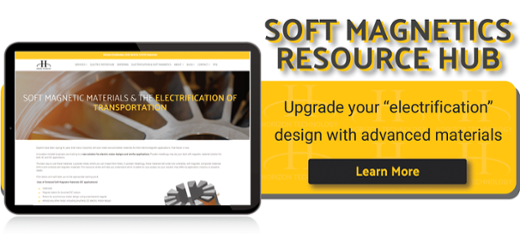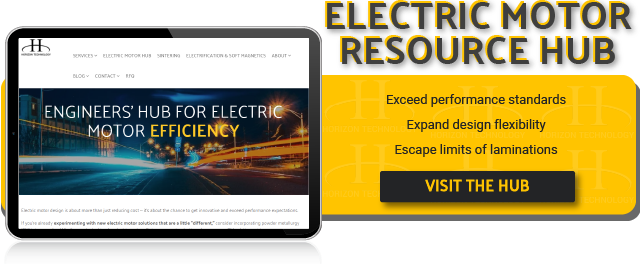The move to electric mobility is well past passenger cars.
From The Big Easy to The Big Apple, silent, zippy, electric-powered transit buses fill the streets. The City of Angels expects to welcome the first electric fire truck in America sometime in 2021. And we should expect to see electric sanitation trucks gliding quietly through our streets soon. Home deliveries shouldn’t be far behind, with electric trucks delivering packages from warehouses to homes noise- and pollution-free. Nashville even has a new electric scooter company many are hailing as the "Netflix of e-scooters."
To make this technology more accessible for people and companies of all incomes and sizes, respectively, there’s a dire need for more efficient electric motors. Traditional designs positioned the electric motors similarly to internal combustion engines, connecting the vehicle's wheels through a driveshaft. However, electric wheel hub motors are positioned on the rotational axis of the wheels (or, for bicycles, in the center sprocket), allowing for:
- Improved efficiency
- Lower power consumption
- Higher torque
Thanks to advances in soft magnetic composite (SMC) materials, brushless wheel hub motors are allowing engineers to reshape automotive motor design.
What Makes Electric Wheel Hub Motors Viable in Vehicle Design?
There are several reasons why wheel hub motors are becoming a fascinating option for transportation applications, from e-bikes to “supercars.”
Stability & Safety
From the engineer's point of view, a hub motor offers greater flexibility than most current drivetrain designs. In many traditional designs, a motor transfers torque to an axle that ultimately connects to and rotates all wheels. In four-wheel drive electric vehicle, you would need two main drive units, each functioning somewhat in unison.
However, if a driver makes a left turn, you want the outside tire to move faster than the inside. In traditional designs, that’s easier said than done.
In wheel hub motors, you can accelerate that individual motor and wheel for:
- Greater stability
- Easier handling
- Smoother acceleration
- Enhanced traction-control system
Compact Design
Thanks to the relatively compact size of a small wheel hub motor, automobile designers have room to add more components like the aforementioned mounting features, or perhaps generators, fuel cells, or battery packs. If a designer doesn’t need additional components, they could simply roll out a smaller, lighter vehicle with crush zones and extra cargo room.
By eliminating the primary “power plant,” an electric hub motor doesn’t bog the vehicle down with a heavy:
- Transmission
- Axles
- Differential
- Driveline
This cutdown on weight makes the vehicle more fuel-efficient.
Hub motors also cut out mechanical losses inherent in the components that stand between the engine and the wheels, reducing noise, vibration, and harshness -- and cost.
An Almost Perfect E-Mobility Solution...
While electric wheel hub motors appear to check all the boxes that EV designers need to satisfy buyers and government regulations, it’s impossible to ignore some of their drawbacks.
The critical challenge that faces hub motor applications is unsprung weight. This term refers to the mass of all components unsupported by the vehicle’s suspension, including the:
- Body
- Frame
- Passengers
Unsprung weight also includes the tires, wheels, and brakes that travel up and down over bumps, debris, and potholes as a vehicle tries to follow the road's contours.
An obvious design solution is to cut down the weight of hub-based electric motors -- a problem engineers have been grappling with for more than 50 years. However, with soft magnetic composite technology, engineers now have a simpler solution.
SMCs: A Game Changer for Electric Wheel Hub Motors
The "electrification of transportation" and other recent trends have increased demand for new and improved magnetic materials. This is where SMCs come in -- these iron-based powders are coated with a uniform layer of electrically insulating film, allowing for higher magnetic performance.
The trend of SMCs has continued to grow in AC designs that require high electromagnetic performance and compact shape-making capability. In wheel hub motors with SMC stator materials, the escape of heat energy is mitigated.
Because the motor produces less heat, engineers can reduce the size and number of fans necessary to cool the motors. With less energy diverted to cooling fans, more energy runs the motors, creating a more efficient system overall.
Playing off the ripple effect of soft magnetic composite motor stators, when there are fewer or smaller fans, the overall weight of the vehicle is lower.
Besides the lowered core losses and weight reduction, SMCs offer:
- Ability to create unique motor shapes: With 3D flux paths
- Greater manufacturing efficiencies: Easier assembly & less waste
- Lower copper loading: Simplified winding scheme with reduced copper use
Which of these opportunities could become reality in your design?
Why SMC Wheel Hub Motors Are The Future of E-Mobility
Wheel hub motors are an efficient alternative to traditional motors due to their adaptability for compactness and high torque. We’re starting to see the fruits in shop floors everywhere:
- Electric car wheel hub motors
- Electric skateboard wheel hub motors
- Electric motorcycle wheel hub motors
- Electric scooter wheel hub motors
- Electric bicycle wheel hub motors
However, hub motors have remained a pipe dream in the eyes of detractors due to the lack of suitable materials and the threat of unsprung weight. While the latter is a valid concern, SMCs offer their own set of benefits that improve performance and make micromobility more affordable to all.
To get more free education on designing a more efficient electric motor, head to our resource page here:




